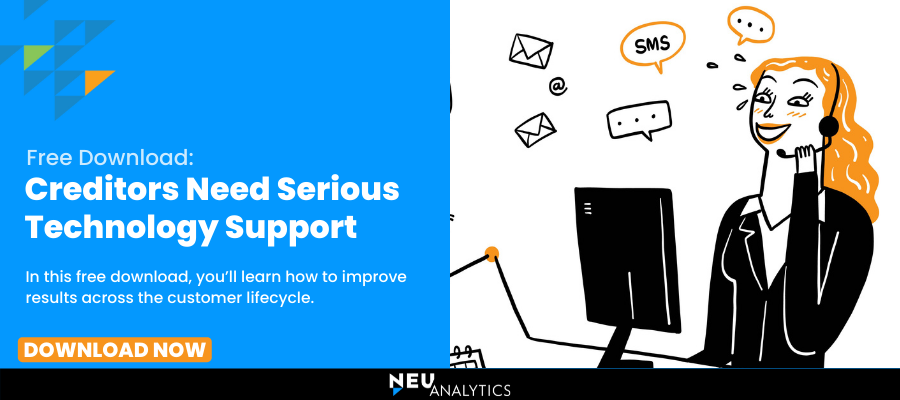In my first article, I explained what Omni-Channel Communications means for Collections, my second article addressed the generational and regulatory considerations surrounding the implementation of an Omni-Channel Communications strategy for collections.
In this third and final segment, we’ll talk about preparing your strategy and launching your strategy.
From the first communication with your consumers, in whatever method that is, you have an opportunity to drive them to your website. Think of your website as the hub of the process. Once there, consumers can perform many tasks, such as make a payment, indicate their communication method preference (text, email, or phone), provide valuable information such as consent for the communication method, contact info such as cell phone number and email – which you can then record and keep on file. You can even have a process to dispute the debt or request verification on your website. As you plan out your omni-channel communications strategy, you should always keep this in mind. Your website should be the destination for most of your communications with your consumers.
Preparation and Strategy
So now you’ve decided to launch into a full-on omni-channel communications process for collections – GREAT! What does that mean? What does it look like?
Before you begin to write up your strategy, you will need to do several things:
1. Create your team.
Have a team dedicated to your strategy. With a team lead, and enough people with different skills to ensure you can answer all your strategy questions. A suggested base team would be Team lead (project manager or operations), IT/technical representative, systems/software representative, vendor manager, legal representative, operations representative, etc. For third-party agencies, you will also want to loop in your account manager so they can reach out to your clients to ensure there aren’t any restrictions on the various communication methods you intend to use – if there are, you may need to further segment by client.
2. Make sure your website is ready.
Do you have the resources on the site that you need? Chat? Payment Portal? Integration with your CRM? Since your goal will be to drive people to your website to ultimately make a payment, you will want to ensure it is in order.
3. Do a little research on the consumer.
How did they reach out to the bank/financial institution in the first place? Were they digital customers? A phone call? A walk-in? Create consumer personas, which also include their generation. This will help you understand and possibly segment customers into how they can best be reached in your contact strategy.
4. Check your hardware/software.
You will likely need to make some changes here. You will want to ensure your collection system can handle Omni-Channel Communications. Depending on your collection system, enabling omni-channel may mean purchasing additional plug-ins or components so that you can seamlessly flow between the various channels and receive data updates from those channels. Your system must also be configured to be seamlessly integrated with the various systems you plan to use – or outside vendors you choose to use.
5. Work with your IT department.
Have an initial conversation with your IT department and see what options are available within your existing software. If some of the Omni-Channel elements are missing that you want to use, you will likely need new vendors to fully embrace the omni-channel experience. Here are some common channels:
- Texting/SMS
- A new Short Code via CTIA
- Direct drop voicemail
- Payment Portal
- Chat functionality
- IVR and any updates to drive people to your website
Next, the team should write down your strategy:
- What is your goal? 25% penetration? 50%? 75%? 100%
- What communications will be involved? How will they be implemented? Do you have contracts in place? What will success look like for each communication channel? When will you add new channels? Timing?
- What accounts will you start with? Will you need to exclude any groups of accounts because of client requirements?
- How will you handle the different generations?
- Include policies and procedures for how/when you will use Omni-Channel Communication and who will oversee each step. Make sure to account for opt-out procedures and how you will handle and track opt-outs across channels. Each method of communication will require its own policies, procedures, and work instructions.
- Are you going to start with your whole portfolio? Or a subset? Perhaps start with a test group to be able to address any concerns before jumping in with both feet.
- Design your process, including flow charts of how consumers will move between each communication channel, and when.
- Remember to focus on the customer experience.
- How are you going to manage user data? Collecting, storing, etc.
- Who will manage this process once it is launched?
- Set up checkpoints with the full team to ensure you are still on track, and to determine if tweaks are needed to the process. During these checkpoints, gather information on customer communication preferences. You will likely find that 80% of your results come from 20% of your efforts. Determine which channels are working best and invest more time/money/effort in those channels.
- Determine how you will handle chat – live chat or chatbots? Live chat is less controlled and open to more potential regulatory violations. However, if you program with chatbots, you know exactly what the bot will be saying, and they will not go off-script. This is a great way for third parties to minimize FDCPA violations.
What Does the Omni-Channel Experience in Collections Look Like?
Here’s an example of what a typical communication experience may look like for your consumer. For the sake of the following situations, we’re going to assume you have the correct permissions in place, and the consumer has not opted out.
- Email to a consumer with a past due notice, the email contains a link to your web portal
- Consumer opens email and clicks on the link to the payment portal
- Consumer validates who they are (enters in account number, SSN, or other info to verify)
- Options are laid out based on the customer’s history, balance, etc.The customer is provided with four options:
- Pay in full today
- Make 3 equal payments over 3 months to PIF
- Make 6 equal payments over 6 months to PIF
- None of the above – please click here to open a customer support chat
- The customer cannot accept any of the options, they need longer terms, so they open a chat, your chat bot is programmed to accept certain payment arrangements up to 12 months.
- Bot: How can I help you?
- Consumer: I need different payment terms
- Bot: I need to verify who I am speaking with; I see from your account that we have a cell phone ending in 1234, is that the best place to send a confirmation code?
- Consumer: Yes
- Code is sent
- Bot: Please enter the code here
- Code is entered
- Bot: Thank you for confirming your identity Mr. Smith. I understand you need different payment terms; I see we offered you a 1, 3 & 6-month option. Do any of those work for you?
- Consumer: No –can’t afford that much per month
- Bot: I can authorize a 9-month repayment term, the monthly payment would be $X – will you accept that?
- Consumer: No – that’s still too much
- Bot: I can authorize a 12-month repayment term, the monthly payment would be $x per month. If you cannot accept that you will need to speak with our customer service representative for additional arrangements. Will you accept the 12-month option?
- Consumer: Yes
- Bot: Thank you, please exit the chat and refresh your browser, you will see the 12-month option. Please click on it and follow the online instructions.
- Customer returns to the browser, refreshes the page, chooses the 12-month option, and is directed to the payment portal to make the first monthly payment.
Not only do you have payment arrangements, but you should have also captured or confirmed some very important information during that exchange:
- Cell Phone Number
- Email Address
- Customer’s preference for online payment
A final consideration for my first party/financial institution readers: are you aware of what your third-party agencies are doing? Are you properly monitoring each communication method? Does your auditing cover the various communication methods? Have you received updated policies and procedures from your agencies that address all their omni-channel communication methods?
As you move through this new world of alternative digital communication and collection methods, you will find that as with all things, one size does not fit all. You will need to allow for flexibility in your process. You will also want to have regular check-points to ensure your process continues to run smoothly. Each time you add or change a vendor, you may need to run through all processes again to ensure nothing has been disrupted.
Having an Omni-Channel Communications strategy in place will ensure you are ready for the digital age and are focusing on customer experience. This is always a good choice when expanding your customer base and providing customer service that is ideal for your consumers!
At NeuAnalytics, we strive to create platforms and solutions that work for your needs. Our solutions are built on compliant technology and standards. Connect with our team to discuss your needs and how NeuAnalytics can make your compliance and vendor management seamless.

